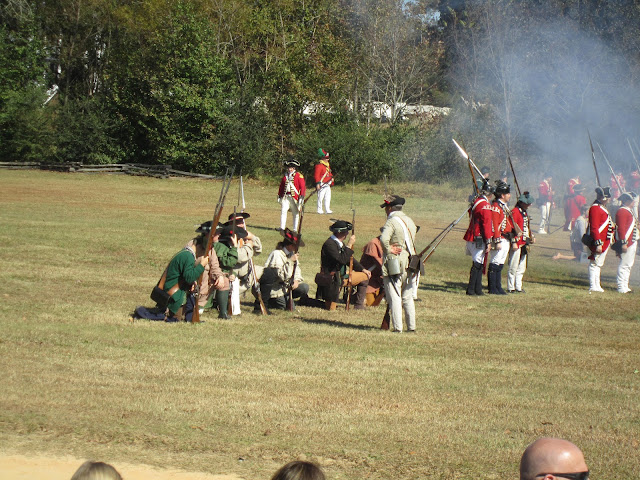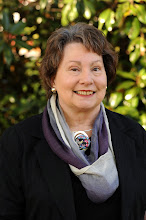Bloomsbury Inn and Camden, S.C.
According to its web site, Historic Camden, "the oldest existing inland town in South Carolina, was part of a township plan ordered by King George II in 1730. The frontier settlement, initially named Fredericksburg Township (later Pine Tree Hill), took hold by the 1750's as Quakers and Scots-Irish emigrants and settlers from Virginia put down roots.
Joseph Kershaw, a native of Yorkshire, England arrived in 1758 and established a store for a Charleston mercantile firm. He prospered, and by 1768, the town was the inland trade center in the colony. At his suggestion, the town became Camden, in honor of Lord Camden, a champion of colonial rights.
In May of 1780, the American Revolution returned to Charleston, and the town fell to the British. Lord Charles Cornwallis and 2500 British troops immediately marched to Camden and set up the main British supply post for the Southern Campaign. For eleven months, the citizens of Camden understood the atrocities of war.
Two battles were fought near by. The Battle of Camden, the worst American battle defeat of the Revolution, was fought on August 16, 1780 nine mile north of our museum. Nearby, General Nathaniel Greene and approximately 1,300 Americans engaged 950 British soldiers commanded by Lord Francis Rawdon on April 25, 1781. It was a costly British win and forced the Redcoats to evacuate Camden."
On November 4-5, 2012 Historic Camden celebrated its 42nd annual Revolutionary War Field Days. These are some pictures from the event.
The pictures above tell the story, as the British soldiers await the American forces behind the gunfire they are hearing. They try to deter the rebel forces with their six pound cannons, but the Patriots resolutely continue to get closer and closer. It was exciting to watch the fleeing British soldiers being followed by the cavalry. Steadily, the Americans pushed their enemies until the skirmish was won.
There were many reenactors there for the weekend, some we have met at other events. Ike is a wood carver, and many visitors watched him work both days. Most of his work was the everyday utensils and tools that colonial families would have needed. There was precision in his work.
There were two church services on Sunday morning, and we attended both. This was the Anglican service, and you will see a mix of dress. Both reenactors and visitors attended. A bit of a surprise to hear the pastor pray for the King of England and his family, but the congregational responses were the same as in our Presbyterian and Episcopal churches today. There was a celebration of communion at the end of the service, and again there was a mix of reenactors and visitors, as we stood across the front. It made me realize once again that we are a part of our American Revolutionary War history, and we need to remember the many sacrifices of our ancestors.
The British camp was quite separate from the colonial encampment. As you can see, the British can be easily identified by their flag.
This was an example of the many broadsides that flooded the colonies as both the Patriots and British sought men to fight on each side. Have you ever wondered what side you might have chosen to fight on in 1774? Would you have had the strength to shout as Patrick Henry did, "Give me liberty or give me death!"?
A trip to Camden is a trip back in time. Our state has a history of standing firm when we make decisions, and we have much to be proud of.

We stayed once again at the beautiful Bloomsbury Inn in Camden, S.C. Katherine and Bruce Brown are the gracious innkeepers. This picture is a bit dark, but Katherine and I were enjoying a look at the old kitchen. She decorates this for the holidays, and their family enjoys this space. You will enjoy looking at the web site and joining them on Facebook. But most of all you will want to visit their historic home. You might have read the diary, written in book form called Mary Chestnut's Civil War, and this was her home.
For you that enjoy coffee, you might want to try the Bloomsbury Inn coffee carried by our own Little River Coffee House in Spartanburg. It is delicious!
On the Bloomsbury Inn web site is a blog you will enjoy reading and a YouTube video that takes you on a tour of the house. For you that look for new recipes, Katherine kindly shares hers.
www.bloomsburyinn.com/
The pictures above tell the story, as the British soldiers await the American forces behind the gunfire they are hearing. They try to deter the rebel forces with their six pound cannons, but the Patriots resolutely continue to get closer and closer. It was exciting to watch the fleeing British soldiers being followed by the cavalry. Steadily, the Americans pushed their enemies until the skirmish was won.
There were many reenactors there for the weekend, some we have met at other events. Ike is a wood carver, and many visitors watched him work both days. Most of his work was the everyday utensils and tools that colonial families would have needed. There was precision in his work.
It is so much fun to watch the children at these events. They are dressed like colonial children and play the games of that time. "Ring Around the Roses" is a popular song, and there is much energy in the "We all fall down." I remember this one, and probably you do, too.
There were two church services on Sunday morning, and we attended both. This was the Anglican service, and you will see a mix of dress. Both reenactors and visitors attended. A bit of a surprise to hear the pastor pray for the King of England and his family, but the congregational responses were the same as in our Presbyterian and Episcopal churches today. There was a celebration of communion at the end of the service, and again there was a mix of reenactors and visitors, as we stood across the front. It made me realize once again that we are a part of our American Revolutionary War history, and we need to remember the many sacrifices of our ancestors.
The British camp was quite separate from the colonial encampment. As you can see, the British can be easily identified by their flag.
This was an example of the many broadsides that flooded the colonies as both the Patriots and British sought men to fight on each side. Have you ever wondered what side you might have chosen to fight on in 1774? Would you have had the strength to shout as Patrick Henry did, "Give me liberty or give me death!"?
A trip to Camden is a trip back in time. Our state has a history of standing firm when we make decisions, and we have much to be proud of.

We stayed once again at the beautiful Bloomsbury Inn in Camden, S.C. Katherine and Bruce Brown are the gracious innkeepers. This picture is a bit dark, but Katherine and I were enjoying a look at the old kitchen. She decorates this for the holidays, and their family enjoys this space. You will enjoy looking at the web site and joining them on Facebook. But most of all you will want to visit their historic home. You might have read the diary, written in book form called Mary Chestnut's Civil War, and this was her home.
For you that enjoy coffee, you might want to try the Bloomsbury Inn coffee carried by our own Little River Coffee House in Spartanburg. It is delicious!
On the Bloomsbury Inn web site is a blog you will enjoy reading and a YouTube video that takes you on a tour of the house. For you that look for new recipes, Katherine kindly shares hers.
www.bloomsburyinn.com/






























































































